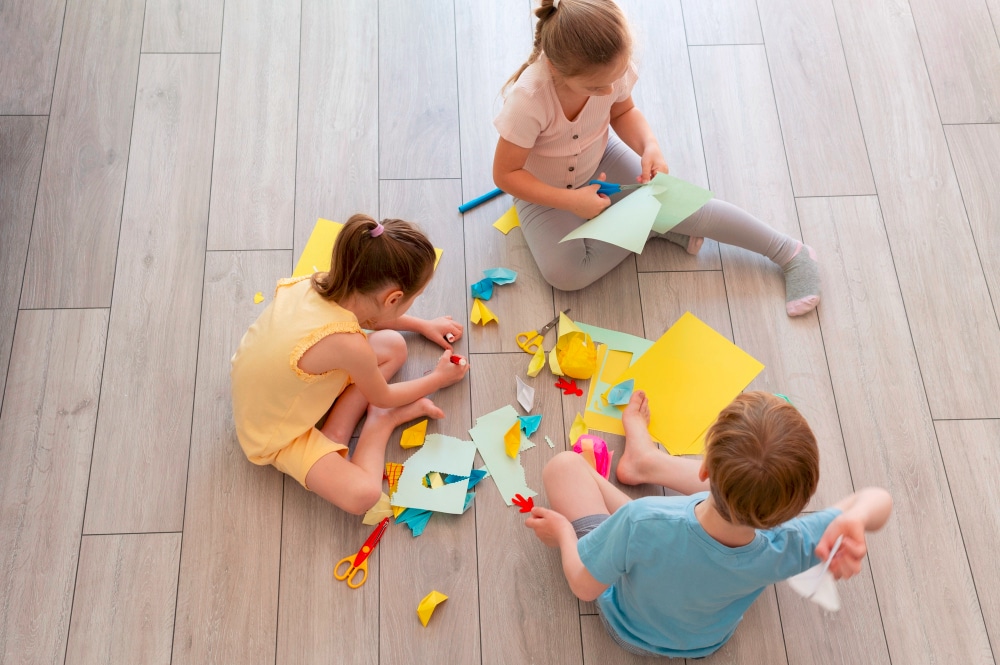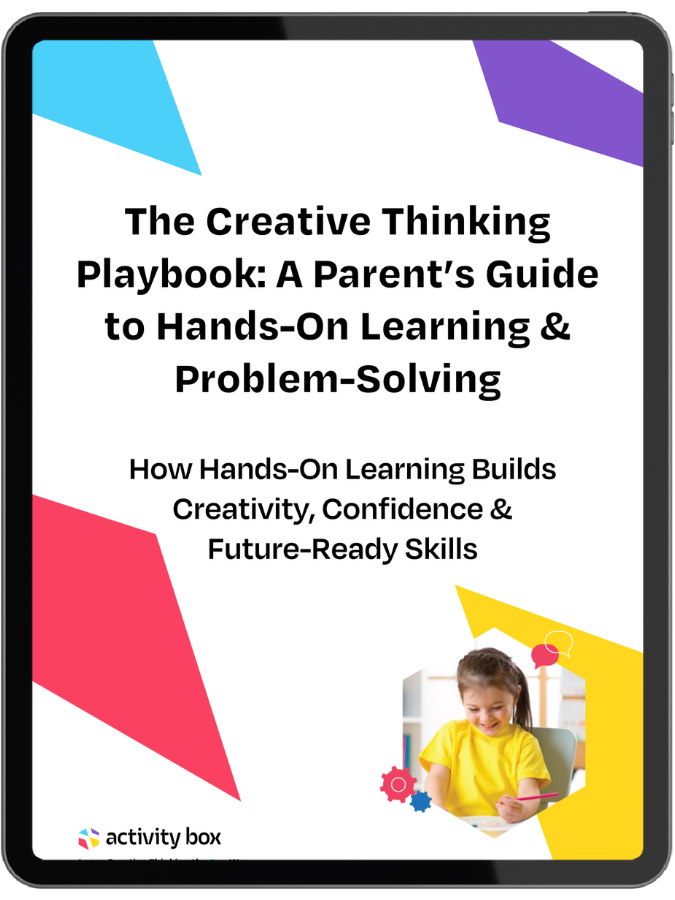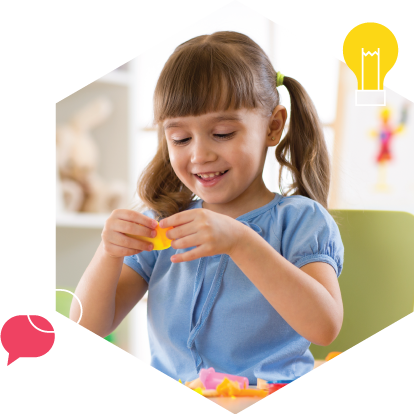
What is Creativity in Early Childhood? Definitions & Real-World Examples
Key Takeaways
| Aspect | Summary |
| Definition of Creativity | The ability to think, explore, and express ideas in original ways. |
| Types of Creative Play | Imaginative play, artistic expression, storytelling, and problem-solving. |
| Cognitive Benefits | Enhances memory, flexible thinking, and innovation skills. |
| Emotional & Social Impact | Strengthens self-expression, empathy, and confidence. |
| How to Foster Creativity | Provide open-ended materials, allow free play, and encourage curiosity. |
Why Creativity Matters in Early Childhood
Did you know that creativity in early childhood is not just about making art? It includes problem-solving, imagination, and self-expression, shaping how children understand the world around them.
In this article, we’ll explore what creativity looks like in young learners, why it matters, and how parents and educators can nurture it through play-based activities.
📖 Related Read: The Role of Creativity in Early Childhood Development
What is Creativity in Early Childhood?
Defining Creativity in Early Childhood
Creativity in early childhood refers to the ability to generate new ideas, explore possibilities, and express thoughts in unique ways. It appears in play, art, problem-solving, and storytelling.
🔬 Research Insight:
According to Virtual Lab School, infants and toddlers express creativity through active exploration and self-expression. Their creativity emerges naturally when they interact with their environment, experiment with materials, and engage in sensory-rich play.
Key Characteristics of Creativity in Children
- Imaginative Thinking – Creating stories, characters, and make-believe scenarios.
- Open-Ended Exploration – Using materials in different ways (e.g., turning a box into a spaceship).
- Problem-Solving – Finding multiple solutions to a challenge.
- Self-Expression – Drawing, dancing, acting, or verbalizing ideas in original ways.
- Curiosity & Experimentation – Asking “What if?” and exploring possibilities without fear of mistakes.
📖 Related Read: Creativity and Problem-Solving in Early Learning
How Creativity Differs from Intelligence
While intelligence is about acquiring knowledge and applying logical reasoning, creativity is about thinking outside the box and coming up with novel solutions.
| Trait | Creativity | Intelligence |
| Definition | Generating new ideas, originality, and self-expression. | Acquiring and applying knowledge. |
| Example | Inventing a new game with household objects. | Solving a math equation correctly. |
| Key Skill | Divergent thinking (many possible answers). | Convergent thinking (one correct answer). |
📖 Explore More: Cognitive Benefits of Creative Play
Types of Creativity in Early Childhood
Creativity is not limited to artistic expression. It spans multiple domains, shaping how children think, solve problems, and interact with the world.
Imaginative Play (Pretend Play)
Children engage in role-playing, storytelling, and make-believe scenarios.
Example:
A child using a cardboard box as a pirate ship, pretending to sail across the ocean.
Artistic Expression
Drawing, painting, sculpting, and crafting allow children to visualize their ideas
Example:
Finger painting a picture of an imaginary world.
Problem-Solving Creativity
Children engage in role-playing, storytelling, and make-believe scenarios.
Example:
Building a bridge with blocks and testing different ways to make it stronger.
📖 Related Read: The Role of Imaginative Play in Cognitive Growth
Musical & Movement Creativity
Singing, dancing, and playing instruments help children express emotions and rhythm.
Example:
Inventing a dance to match the mood of a song.
How Creativity Enhances Cognitive Development
Brain Growth & Flexible Thinking
Scientific research shows that creative activities strengthen neural pathways, helping children develop cognitive flexibility.
🔬 Research Insight:
According to a study by National Association for the Education of Young Children (NAEYC), open-ended play boosts:
- Memory Retention – Learning through hands-on engagement.
- Divergent Thinking – Exploring multiple solutions to a challenge.
- Executive Function – Strengthening attention, planning, and decision-making skills.
📖 Related Read: How ActivityBox’s Program Shapes Cognitive Growth
Creativity & Emotional Intelligence
Self-Expression & Confidence
Creativity allows children to express thoughts and emotions in non-verbal ways, especially when they struggle with words.
Example:
A shy child drawing a picture to express their feelings instead of speaking.
Building Empathy Through Play
When children engage in role-playing, they take on different perspectives, which fosters empathy.
Example:
Playing “doctor” and caring for a stuffed animal as if it were a real patient.
📖 Related Read: How Creative Play Enhances Emotional Intelligence
Want even more brain-boosting activities?
Discover easy, screen-free ways to help your child grow creativity and confidence at home.
How Parents and Educators Can Foster Creativity
Encouraging Open-Ended Play at Home
🔍 Example Activity:
Give children a “mystery box” filled with random materials and ask them to create something.
Easy Creative Activities for Kids
- Provide loose materials (blocks, fabric, paper, clay) for free exploration.
- Ask open-ended questions like, “What else can you do with this?”
- Avoid micromanaging—let children experiment without right or wrong answers.
📖 External Source: Read about real-world creative play at University of Missouri Extension.
Classroom Strategies for Educators
- Allow students to solve problems in multiple ways.
- Integrate storytelling and role-play into lessons.
- Use project-based learning to encourage hands-on exploration.
📖 Related Read: Creativity and Problem-Solving in Early Learning
Key Takeaways and Next Steps
- Creativity involves imaginative play, problem-solving, and self-expression.
- It strengthens cognitive flexibility, emotional intelligence, and confidence.
- Parents and educators can nurture creativity through open-ended play and hands-on learning.
👉 Give your child the gift of creativity with ActivityBox’s monthly learning kits!
FAQs About Early Childhood Development
Q: What is the definition of creativity in early childhood?
A: Creativity is the ability to explore, imagine, and solve problems in unique ways.
Q: How does play encourage creativity?
A: Play allows children to experiment, create new ideas, and express emotions freely.
Q:What are some creative activities for preschoolers?
A: Storytelling, role-playing, arts and crafts, and building with blocks.
Q: How can parents encourage creativity in toddlers?
A: Provide open-ended materials, encourage free play, and ask thought-provoking questions.
Still have more questions?
We’re here to help! Contact us →

Get the Free Creative Thinking Playbook
Learn how hands-on play helps your child develop problem-solving, creativity, and confidence, without screen time or prep.
Hands-on, screen-free activities
Printable planner included
Stress-free and fun for parents
Expert-designed, child-approved
